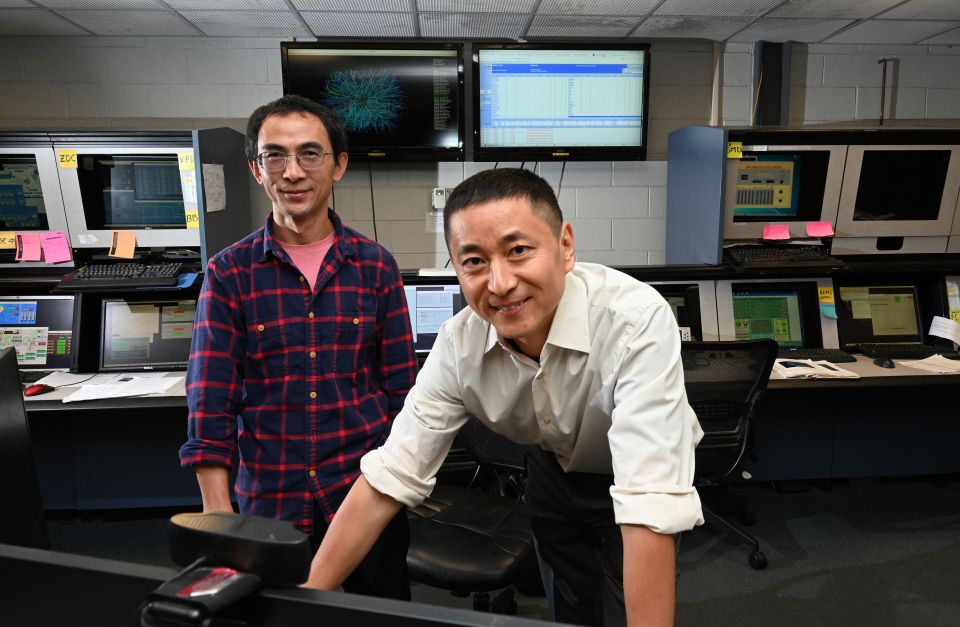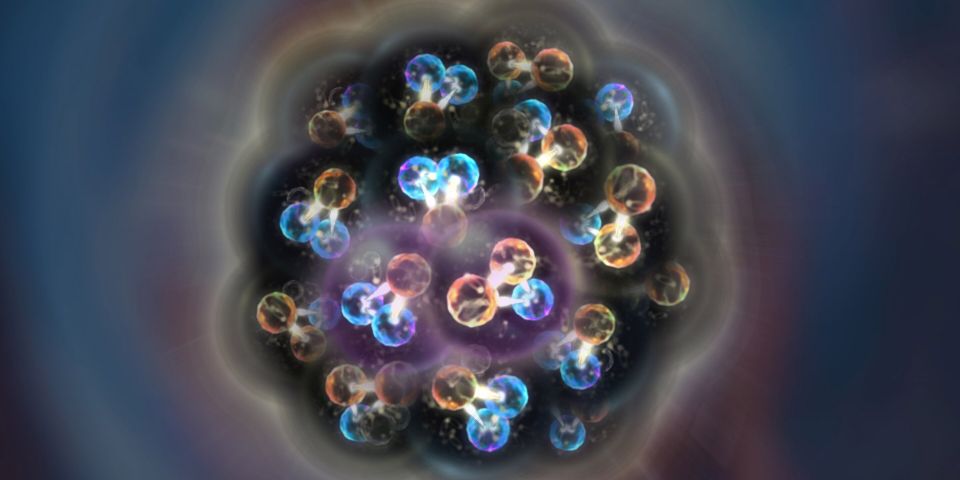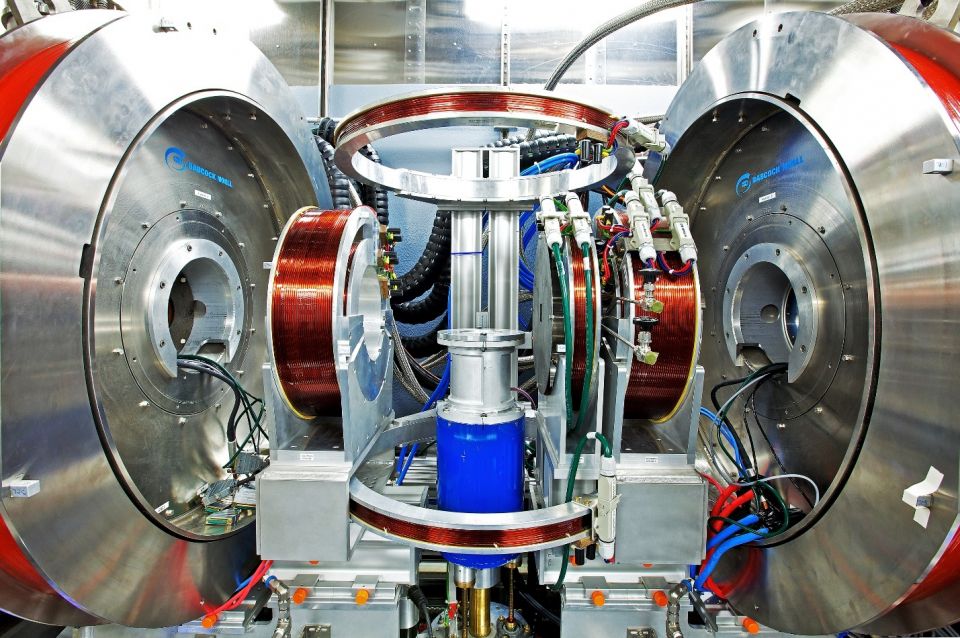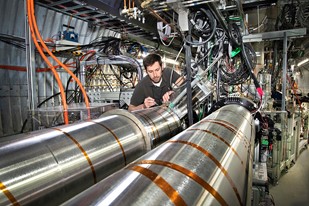The Continuous Electron Beam Accelerator Facility at Jefferson Lab. (Source: Jefferson Lab)
Research with the Department of Energy’s Thomas Jefferson National Accelerator Facility (Jefferson Lab) has revealed new insights into short-range correlations—the brief pairings of nucleons (protons with neutrons, protons with protons, or neutrons with neutrons) in the nuclei of atoms. The study, published in Nature, used precision measurements to determine that short-range correlations differ depending on the density of the nucleus, that is, how many nucleons it contains.
20-to-1 Ratio in heavy nuclei: The study, led by Shujie Li of Lawrence Berkeley National Laboratory, was designed to compare the prevalence of the different kinds of short-range correlations within light nuclei that contain few nucleons, specifically the nuclei of helium-3 (containing two protons and one neutron) and tritium (containing one proton and two neutrons). Previous studies with heavier nuclei that contain more nucleons (such as those of carbon, iron, and lead) had indicated that a nucleon tends to pair up with a different kind of nucleon (a proton with a neutron) 20 times more often than a nucleon pairs up with the same kind of nucleon (a proton with a proton, or a neutron with a neutron).
4-to-1 Ratio in light nuclei: Li’s team used Jefferson Lab’s Continuous Electron Beam Accelerator Facility to yield data that were far more precise than that achieved in previous studies. Li explained, “Because of looking at tritium and helium-3, we were able to use inclusive scattering [measuring only the electrons that bounced off of correlated nucleons], and that gives us much higher statistics than other measurements.”
Rather than finding the 20-to-1 ratio, the researchers found a 4-to-1 ratio in their analysis of short-range correlations in helium-3 and tritium. They determined that there were four proton-neutron pairings for every proton-proton or neutron-neutron pairing. There was an especially large contribution of proton-proton pairings in the nucleon interactions.
Hypothesis: The study results suggest that the average distance between the nucleons in a nucleus may account for the difference in nucleon interactions in light nuclei versus heavy nuclei. According to this hypothesis, because the nucleons in light nuclei are further apart than in heavy, dense nuclei, there is a different balance between the proton—neutron interactions and proton-proton interactions in the light versus heavy nuclei.
Why it’s important: Further research of both light and heavy nuclei is planned to test this hypothesis. The scientists note that the details of short-range correlations are crucial for nuclear physics researchers to understand. “We are pushing the precision in experiments on nuclear structure, and so these seemingly small effects can become very important as we continue to produce high-precision results at Jefferson Lab,” said scientist Douglas Higinbotham. “So, if the nuclear effects are not only persistent but unexpected in the light nuclei, that means you can have unexpected things going on in your deep inelastic scattering results.”










.jpg)